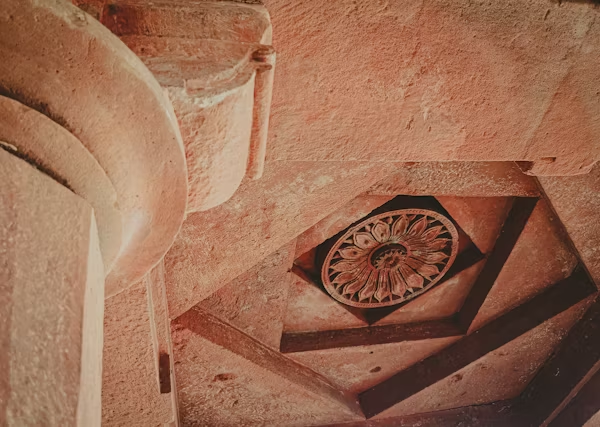Art has always been humanity’s way of expressing what words sometimes cannot. When we talk about ancient artz, we are diving into a fascinating world where creativity, culture, and history converge. These masterpieces from long ago not only showcase the artistic skills of our ancestors but also open a window to their beliefs, lifestyles, and values. The beauty of ancient art lies not just in its visual appeal but in the stories it holds — stories that continue to inspire and intrigue us today.
In this article, we will journey through the captivating realm of ancient artz, exploring its various forms, the civilizations behind them, and why these treasures are still relevant centuries later.
What Are Ancient Artz?
Ancient artz refers to creative works produced by civilizations that existed thousands of years ago. Unlike modern art, these pieces were often deeply connected to religious rituals, social structures, or everyday life. From hand-carved statues to colorful frescoes, ancient artz reflects the ingenuity and culture of early societies across the globe.
Unlike simple decoration, many ancient artworks served practical or symbolic purposes. Some were meant to honor gods, others to commemorate rulers, and some even to tell stories of heroic deeds or everyday activities.
The Importance of Ancient Artz in Understanding History
Ancient artz is like a silent historian. Because written records were rare or incomplete in many early civilizations, art serves as a crucial tool for archaeologists and historians. By examining these works, we learn about ancient technology, social hierarchies, religious beliefs, and cultural values.
For example, the detailed hieroglyphics and murals of ancient Egypt reveal much about their religion and daily life. Similarly, the grand temples and sculptures of the Greeks give insight into their mythology and ideals of beauty. These artz pieces are not just objects; they are stories frozen in time, waiting to be discovered.
Exploring Different Forms of Ancient Artz
Ancient artz comes in many shapes and forms, each with its unique style and significance. Some of the most common types include:
Sculpture: From the delicate figurines of prehistoric times to the imposing statues of gods and kings, sculpture was a popular way to honor important figures and express religious devotion.
Pottery and Ceramics: Ancient pots and vessels often featured intricate designs and symbols. Beyond their functional use, these pieces provide clues about trade, daily life, and artistic trends.
Paintings and Murals: Cave paintings created by early humans and detailed frescoes from ancient cities tell stories and document events, capturing moments that words could never fully express.
Jewelry and Ornaments: Crafted from gold, silver, and precious stones, jewelry was not only decorative but also a symbol of status and power.
Famous Civilizations and Their Ancient Artz
Each ancient civilization contributed something unique to the world of artz, shaped by their environment, beliefs, and technological advancements.
The Egyptians are known for their monumental pyramids, intricate tomb paintings, and elegant statues of pharaohs. Their art was heavily influenced by religion and the afterlife, emphasizing eternity and divine power.
The Greeks focused on harmony, proportion, and realism. Their sculptures celebrate the human form and mythological tales, setting standards for Western art for centuries.
In Mesopotamia, the earliest known civilization, art was often practical and symbolic, including cylinder seals, relief carvings, and impressive ziggurats.
The Mayans and Aztecs of Central America produced vibrant murals, stone carvings, and ceramics rich in symbolism tied to their complex religious beliefs.
Techniques and Materials Used in Ancient Artz
Ancient artists worked with the materials available to them—stone, clay, metals, pigments from natural sources, and wood. Their craftsmanship was highly skilled despite lacking modern tools.
Stone carving required patience and precision, often taking years to complete a single statue or relief. Paints were made from crushed minerals, plants, and insects, offering a surprisingly broad palette.
Pottery involved shaping clay and firing it in kilns to make durable objects. The surface was then painted or engraved with patterns representing cultural stories or everyday life.
Metalworking was advanced in many ancient cultures, allowing artists to create intricate jewelry and weapons, showing both beauty and functionality.
The Symbolism Behind Ancient Artz
Ancient artz is full of symbols that carried deep meanings for those who created and viewed it. Animals, gods, natural elements, and geometric shapes all played symbolic roles.
For example, in Egyptian art, the scarab beetle symbolized rebirth and protection. The lotus flower represented purity and creation. In many cultures, animals like lions, snakes, and birds symbolized power, wisdom, or danger.
Understanding these symbols helps modern viewers grasp the messages and values ancient societies wanted to communicate. Art was a language that connected people to their spirituality, history, and community.
How Ancient Artz Influences Modern Creativity
The influence of ancient artz is visible in countless ways throughout modern art and culture. Contemporary artists often draw inspiration from ancient styles, themes, and techniques.
Architectural elements such as columns, friezes, and arches trace back to ancient Greece and Rome. Symbolism from ancient cultures still appears in logos, tattoos, and fashion designs.
Beyond aesthetics, ancient artz reminds us of human creativity’s roots, showing how art has always been essential for storytelling, identity, and cultural expression.
Preserving Ancient Artz for Future Generations
Many ancient artz pieces have survived thousands of years, but they face threats from natural decay, human conflict, and neglect. Preservation efforts involve careful excavation, restoration, and museum exhibitions.
Technological advancements like 3D scanning and digital modeling now allow experts to study and preserve fragile artifacts without causing damage.
Public awareness and respect for ancient art’z play a vital role in protecting these treasures so future generations can continue to learn from and appreciate them.
Visiting Ancient Artz: Museums and Archaeological Sites
For those fascinated by ancient art’z, visiting museums and archaeological sites offers an incredible opportunity to see these masterpieces up close.
Places like the Louvre in Paris, the British Museum in London, and the Metropolitan Museum of Art in New York house extensive collections of ancient artifacts.
Traveling to ancient ruins such as the Pyramids of Giza, Machu Picchu, or the Roman Forum allows visitors to experience the environment where these artworks were created.
Such experiences deepen appreciation and provide a direct connection to humanity’s shared history.
The Mystery and Magic of Ancient Artz
What continues to make ancient art’z captivating is its mystery. Many artworks have meanings lost to time, sparking curiosity and debate among scholars and enthusiasts.
Why were some symbols chosen? What rituals surrounded the creation of these pieces? How did the artists achieve such skill with limited technology?
These questions keep the study of ancient art’z alive and evolving, blending science with imagination as we piece together the puzzles of the past.
Conclusion
Ancient art’z offers us much more than beautiful objects; it presents a portal into the minds and hearts of civilizations long past. Through sculpture, pottery, painting, and more, ancient artists communicated ideas, celebrated life, and preserved their cultures.
As we continue to explore and protect these artistic treasures, we not only honor our ancestors but also enrich our understanding of human creativity and identity. Ancient art’z reminds us that art is timeless, bridging generations and cultures through its power to inspire and connect.
FAQs About Ancient Artz
What does the term ‘ancient artz’ mean?
It refers to artistic works created by early civilizations, often reflecting their culture and beliefs.
Why is ancient artz important today?
It helps us understand history, culture, and human creativity from the past.
What materials were used in ancient artz?
Common materials included stone, clay, metals, natural pigments, and wood.
Which civilizations are famous for their ancient artz?
Ancient Egypt, Greece, Mesopotamia, the Maya, and the Aztecs are notable examples.
How do museums preserve ancient artz?
Through careful restoration, controlled environments, and digital technology.
Can ancient artz influence modern art?
Yes, many modern artists and designers draw inspiration from ancient themes and techniques.











